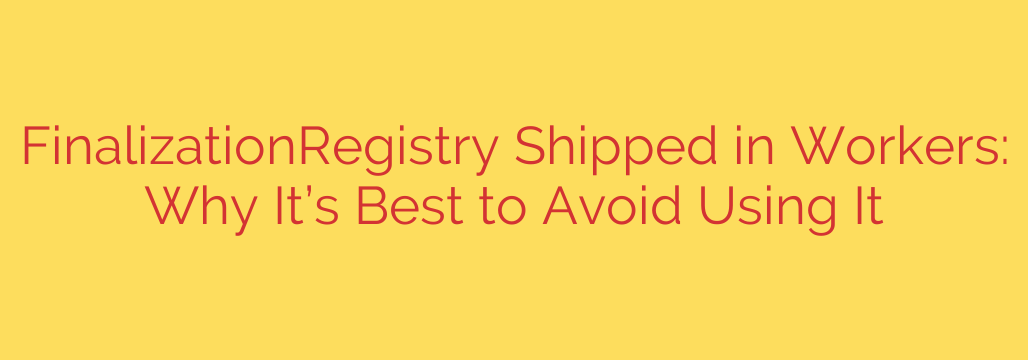
Managing resources and ensuring proper cleanup when objects are no longer needed is a critical aspect of robust application development. A mechanism known as <b>FinalizationRegistry</b> has been introduced in JavaScript environments, including Workers, intended to provide a way to schedule a cleanup callback when an object is garbage collected. On the surface, this might seem like a convenient tool for tasks like closing file handles or releasing network connections tied to specific objects.
However, despite its availability, relying on <b>FinalizationRegistry</b> for essential resource management is strongly discouraged in most scenarios. The primary reason for this caution lies in the fundamental nature of JavaScript’s <b>garbage collection</b>. Garbage collection is non-deterministic. You have no guarantee when or even if an object will be collected within a specific timeframe. Consequently, the cleanup callback scheduled via <b>FinalizationRegistry</b> will fire at an unpredictable moment, making it impossible to rely on for timely or guaranteed resource release.
This non-deterministic behavior introduces significant risks. Resources might be held onto for far longer than necessary, leading to memory leaks or resource exhaustion. Conversely, in complex scenarios, there’s a risk that an object could be collected and its associated resource cleaned up while another part of the code is still expecting that resource to be available. This can lead to hard-to-debug issues and race conditions. The complexity of correctly managing object lifetimes and associated finalizers, especially in environments like Workers where state and objects are handled across threads, adds another layer of difficulty. Ensuring reliability and preventing subtle bugs becomes exceedingly challenging when dependent on the internal, unpredictable workings of the garbage collector.
For reliable resource management, developers should favor explicit patterns. Using <b>try...finally</b> blocks is the standard and most robust way to ensure cleanup code runs after a block of operations, regardless of whether errors occur. Implementing clear resource management classes or functions that explicitly handle setup and teardown provides predictable control. Passing objects or resources explicitly to functions that require them and ensuring those functions are responsible for their lifecycle within their scope offers much greater reliability than hoping a finalizer will trigger at the right time.
In summary, while <b>FinalizationRegistry</b> is now present, its inherent unpredictability makes it unsuitable for typical resource cleanup tasks where timely and guaranteed execution is needed. For building reliable and maintainable applications, especially in demanding environments, sticking to established explicit resource management alternatives is the recommended best practice. Avoid the temptation to use <b>FinalizationRegistry</b> unless you have a very specific, niche use case and a deep understanding of its complex interactions with garbage collection.
Source: https://blog.cloudflare.com/we-shipped-finalizationregistry-in-workers-why-you-should-never-use-it/








